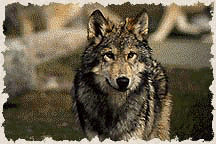Contributors to the guidelines listed below include Jason Wilson, Debbie Lineweaver, Bill Wengeler, and Nathan Varley. Additional comments are mine alone—-Kevin Sanders.
Respect for Wildlife
Do not pursue or chase wildlife, whether by foot or in a vehicle. This includes moving your vehicle into a position that effectively “blocks” wolves, or other wildlife that are trying to cross a roadway. The regulars are seeing this more often than you might expect. Wolves, and other animals approaching the road are almost always looking to cross. Allow it to happen. Forcing an animal to move off or change their behavior is forbidden. Try to anticipate the movement of animals and stay out of their way!
Do not feed or touch wild animals. Feeding wildlife can lead to habituation of the animal to humans which in turn can result in the animal’s injury or death. A habituated animal can also pose a threat to human safety. If you encounter an animal on the road, stay in your car. Often animals are afraid of people outside their car, but tolerate vehicles. Park regulations stipulate that wildlife may not be approached closer than a distance of 25 yards. For bears, the distance is 100 yards. Feeding ground squirrels, or birds is nearly as bad as feeding a bear. Resist the temptation, and nicely encourage others to follow your example.
Honor area closures. Do not walk into areas posted as closed. Most closures are temporary and created to allow wildlife to successfully breed and/or forage, and are well marked. Closed areas are small relative to the areas left open, so it is the least we can do to help the wildlife in question survive.
Do not disturb nests or dens. If you are aware of a sensitive location that is not closed, refrain from going there. Closures are not used in all cases where they may be needed to protect wildlife. Use your own good sense in avoiding disturbance in these situations.
Howling, hooting, or other attempts to get wildlife to respond is illegal. Do not howl at the wolves. Invariably, someone has the urge to try but never hear the wolves answer. These activities can disrupt the natural flow of wildlife habits. It can also be annoying to other visitors.
Drive slowly. Yellowstone Park speed limit is 45 mph or less, but frankly, 35 mph is fast enough if you want to spot wildlife. Plus, the chance of hitting an animal and causing its injury or death is reduced as you reduce your speed. This is particularly true at night, or near dusk and dawn. However, if you are traveling slower than those behind you, please pull over and let them pass.
Following close behind or right next to a walking bison on the road is actually more stressful on them than slowly driving by. Save the photo’s for calm bison in a nice meadow.
Do not remove anything from the park (rocks, flowers, antlers, etc.). With close to 3 million visitors per year, removal of objects would damage habitat. It is illegal and can lead to significant fines.
Respect for Other Visitors
Avoid rude behavior. Stopping by other visitors, lowering your window and yelling, “What are you looking at?” is the regular’s Number 1 pet-peeve. It rarely is acknowledged. So instead, if you are genuinely interested, pull off the road, cut off your engine, and walk over and politely ask them in a normal voice what they are viewing. Or simply look where they are looking to discover for yourself what is being viewed.
Use pull-outs! When viewing wildlife from or near your car, pull off of the road completely so you do not block traffic. Park regulations require you to pull off the roadway past the outside white line to prevent traffic hazards, traffic jams, and allow other vehicles to pass safely.
Use pull-outs when available, but avoid creating new pull-outs by parking on vegetation or in wet or otherwise sensitive areas. If a place to pull off is not available, move on and use the next available spot.
Turn off your lights and engine. Engine noise interferes with everyone’s ability to hear and enjoy wolf howls, coyote howls, birdcalls, bison grunts, and other sounds of nature. Plus, the exhaust can be unmerciful!
Close doors quietly and infrequently. The regulars use a trick: close your doors softly, but leave them unlatched until you depart.
Talk quietly. This can be one of the most respectful things you can do.
Ask before using someone else’s scope, and do not adjust it unless given permission by the owner. It is OK and even encouraged to take a peek through someone’s spotting scope. Many regulars enjoy turning people on to the benefits of high magnification. Just be considerate, and don’t assume a scope is there for you to use. This is becoming a real problem believe it or not. I have actually had visitors muscle, or push clients, and me away from our scopes.
Be conscious of where you stand and walk. Do not block others’ view. Be careful not to bump tripod legs. You do not want to knock over a expensive scope or camera.
Turn off car alarm systems! When you come to Yellowstone, disable the type of alarm that will go off like a siren when someone brushes your car. It is inevitable that your car will be bumped at some point in your Yellowstone visit, leading to the overwhelmingly irritating siren. The park is not the urban jungle, this level of precaution is unnecessary. Refrain from honking your horn while locking the doors. Try and keep as quiet as you can whenever possible. The wildlife will appreciate it and so will your fellow visitors.

